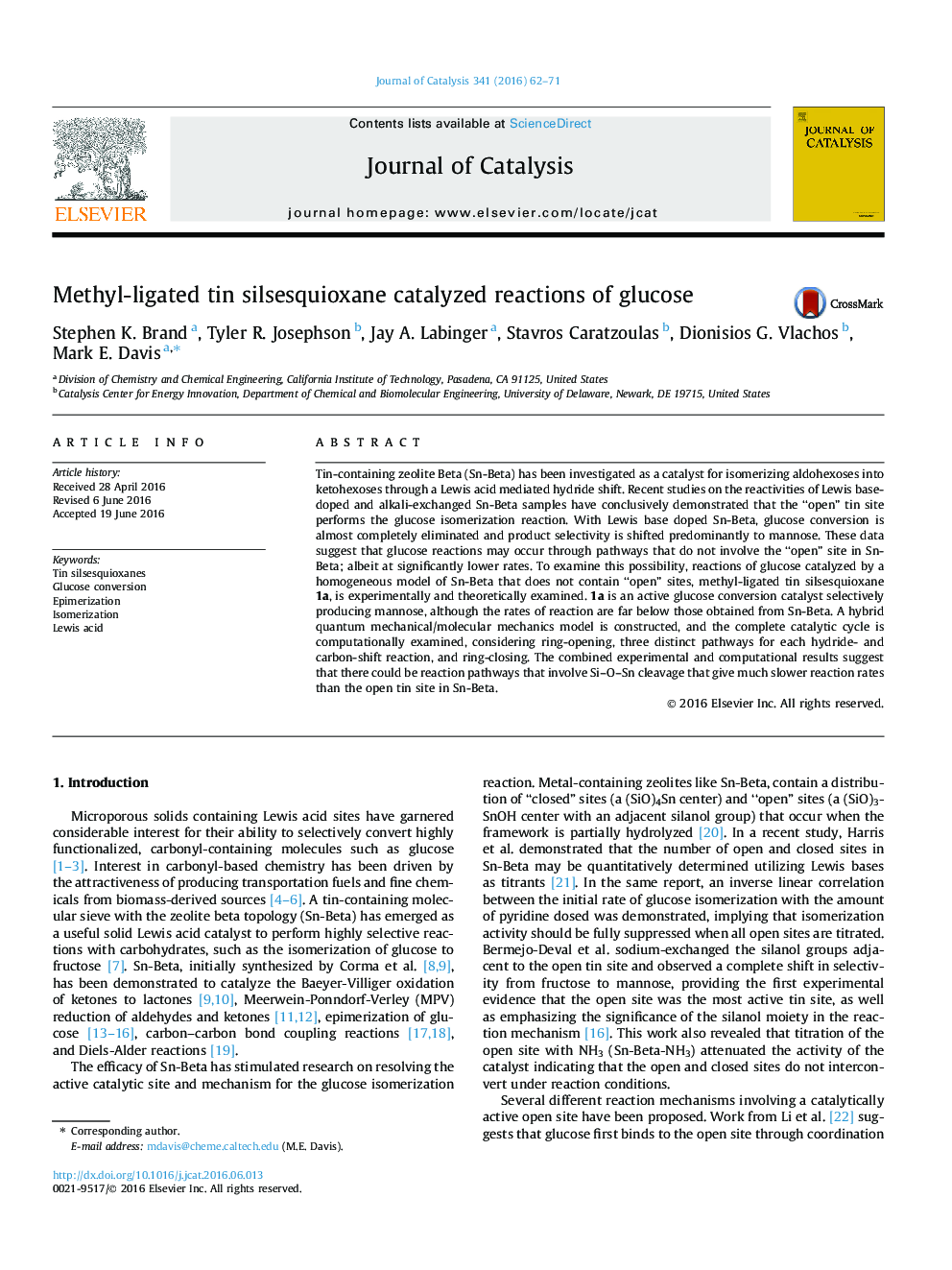| Article ID | Journal | Published Year | Pages | File Type |
|---|---|---|---|---|
| 60487 | Journal of Catalysis | 2016 | 10 Pages |
•A methyl tin silsesquioxane is studied as a model for the closed site in Sn-Beta.•Glucose is catalyzed through equivalent pathways to the heterogeneous open site.•The closed site is catalytically active, but less so than the open site.
Tin-containing zeolite Beta (Sn-Beta) has been investigated as a catalyst for isomerizing aldohexoses into ketohexoses through a Lewis acid mediated hydride shift. Recent studies on the reactivities of Lewis base-doped and alkali-exchanged Sn-Beta samples have conclusively demonstrated that the “open” tin site performs the glucose isomerization reaction. With Lewis base doped Sn-Beta, glucose conversion is almost completely eliminated and product selectivity is shifted predominantly to mannose. These data suggest that glucose reactions may occur through pathways that do not involve the “open” site in Sn-Beta; albeit at significantly lower rates. To examine this possibility, reactions of glucose catalyzed by a homogeneous model of Sn-Beta that does not contain “open” sites, methyl-ligated tin silsesquioxane 1a, is experimentally and theoretically examined. 1a is an active glucose conversion catalyst selectively producing mannose, although the rates of reaction are far below those obtained from Sn-Beta. A hybrid quantum mechanical/molecular mechanics model is constructed, and the complete catalytic cycle is computationally examined, considering ring-opening, three distinct pathways for each hydride- and carbon-shift reaction, and ring-closing. The combined experimental and computational results suggest that there could be reaction pathways that involve Si–O–Sn cleavage that give much slower reaction rates than the open tin site in Sn-Beta.
Graphical abstractFigure optionsDownload full-size imageDownload high-quality image (107 K)Download as PowerPoint slide
